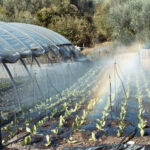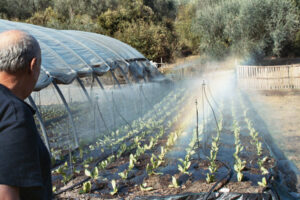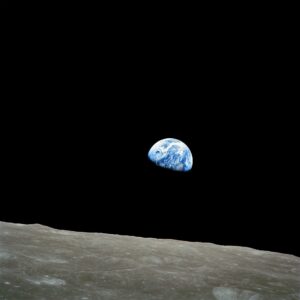The Arhuaco, Kogi, Wiwa and Kankuamo communities have long safeguarded the sacred lands of the Sierra Nevada de Santa Marta mountain range in northern Colombia. These lands hold profound spiritual significance, deeply rooted in their cosmologies and belief systems. The snow-capped peaks are considered the Heart of the Earth, and its ecological balance is of high importance in maintaining environmental balance across the world.
The Arhuaco, Kogi, Wiwa and Kankuamo see themselves as humanity’s “elder brothers and sisters”, responsible for preserving this balance. Rivers represent the veins of the Earth, connecting the mountains to the spirit realm, while trees and forests are living beings that sustain all life. These indigenous groups honour nature through ceremonies, payments to the Earth, and sustainable use of resources, maintaining an intimate relationship to the land that is central to their cultural identity. Specific natural sites are sacred spaces for rituals of divination and healing, and keen observation of ecological patterns guide their ceremonial calendar, as Mamos and Zagas — the spiritual leaders and elders of these indigenous groups — draw on ancestral knowledge to read signs from nature to maintain equilibrium with Mother Earth.

Unfortunately, the Sierra Nevada de Santa Marta has experienced high rates of deforestation for several decades — estimates range from 50 to 65% of forest cover loss — with logging, land clearing for cattle ranching, and cultivation of illicit crops being the primary drivers. Along with climate change, the loss of forests has led to altered rainfall patterns, flooding, soil erosion, declining water resources and the increasing threat of desertification across the region.
Massive agricultural expansion and mountain top mining have also severely impacted biodiversity, polluting rivers while fragmenting critical wildlife habitat. Studies indicate that over 50% of mammal species and over 65% of amphibians in the Sierra Nevada de Santa Marta are at an elevated risk of extinction. Several endangered animal species, like the spectacled bear, have already disappeared from lower elevations. Rising temperatures have caused accelerated melting of the Sierra’s glaciers and high mountain snowpack, which are critical water sources sustaining ecosystems, agriculture and human settlements across the region during the dry season. Glacier retreat and changes in seasonal precipitation are disrupting the sensitive high mountain environments, threatening endemic species specially adapted to thrive in these conditions.
For the Arhuaco, Kogi, Wiwa and Kankuamo communities, environmental degradation represents profound spiritual loss that threatens the continuity of their traditions and their relationship to the sacred landscape that has sustained them for millennia. Consequently, revitalising sustainable practices has become an urgent priority. Jaguar Siembra is a community-centred agroecology and reforestation project that supports this need, transforming both the natural and cultural landscapes in the Sierra Nevada de Santa Marta. The project focuses on the environmental challenges in the region through grassroots efforts for ecological regeneration. Their model is centred on the notion that individual healing requires connecting with ancestral lands and teachings through the wisdom of medicinal and food-bearing plants. Their immersive workshops and hands-on agroforestry projects empower the communities to write a new story of hope.
Jaguar Siembra was founded in 2016 by Santiago Roa, a filmmaker from Bogota, who travelled to Santa Marta to visit the Lost City, also known as Teyuna. This journey was inspired by his personal interest in reconnecting and discovering Colombia’s ancient cultures and sacred sites. He was particularly interested in meeting the Mamo who is the spiritual guardian of the Lost City, to understand the imbalances in our relationship with Mother Earth, and the subsequent consequences.

“I am a filmmaker, and the idea was to research and document the knowledge and cultural heritage we have, which is getting lost, and we don’t have much access to due to the way we grew up in an education system that is more focused on Western history than indigenous history. My interest was always to try and find out where we really come from and to learn about the stories that they didn’t tell us, the stories that are still alive in the territories with communities that have been thriving for thousands of years. In looking for those stories and researching that cultural heritage, the idea was to work hand-in-hand with nature through cultural projects that support regeneration.”
Humanity has been slowly losing the ancestral ways of growing food. The crops and techniques that were once common are more difficult to find, as farming has changed in many ways, even in indigenous communities.
“We are working with regenerative agriculture to regenerate that soil, to plant food forests again to recover ecosystems with biodiversity and economies like cacao, and other food crops that are important for food security for indigenous families. Basically I’ve travelled alone in this area, documenting the planting of these food forests, and I’ve been doing that for eight years, working with the local communities and farmers across the Sierra Nevada.
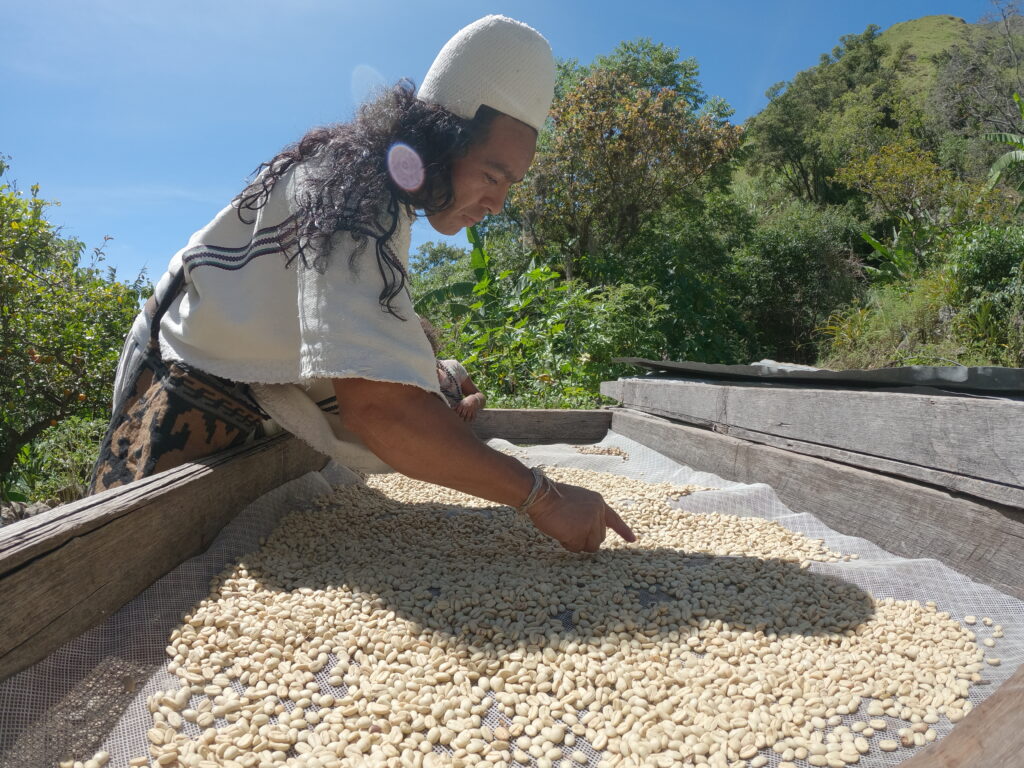
“Essentially we focus on the intersection between nature and culture, indigenous rights and cultural heritage, as well as other scientific ways that the communities here relate with nature, such as spiritual payments and concepts related to ‘el buen vivir’, how they live in harmony with nature without destroying it. Basically it’s about how we can learn from indigenous communities, working more interculturally to live in harmony with nature.”
Over the past year the focus has been on creating a community food forest.
“We started with a pilot project, uniting a community with four acres of food forests that they use for gatherings and community work. There is a school where kids from different communities travel to and stay and study during the week, and this food forest will also support food security at the school.”
Santiago highlights the collaborative nature of the project.
“There are different people working together in ways that resemble the traditional minga, or community work. Sometimes we gather every Saturday, and there are several days throughout the year dedicated to maintaining the forest, creating fences, planting, and nurturing our relationship with the food we are growing, but in a communal way.”
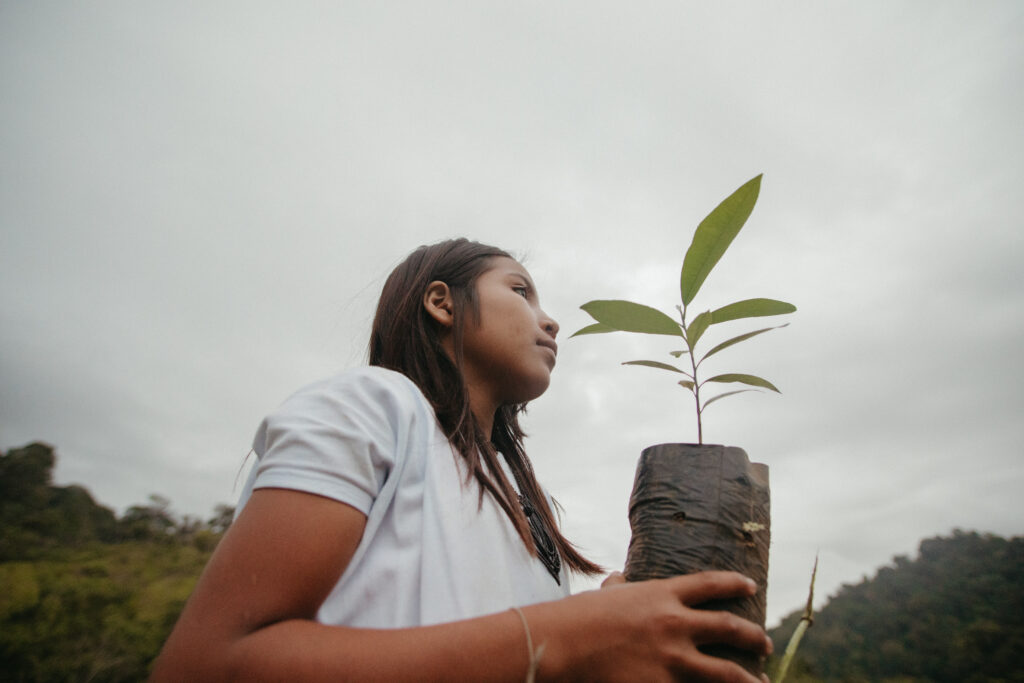
Despite being a small organisation — with just three people working mostly as volunteers — over the past few years, Jaguar Siembra has made significant strides with its collaborative regenerative efforts: a total of 62,800 trees and plants have been planted, benefitting 14 native families and their lands; while eight cultural media projects have been created, furthering the mission of documenting and preserving indigenous knowledge and traditions. While Jaguar Siembra is clearly thriving, Santiago also acknowledges the many challenges he experiences.
“This is a really demanding job in terms of energy, as I need to travel and follow the holistic processes that the Arhuaco, Kogi, Wiwa and Kankuamo communities have here, going through spiritual payments and spiritual work before, during, and after every process we are doing. I think one of the most difficult things is how to work together with more harmony and how we can communicate better. Every project is going to be difficult because that’s the nature of how it needs to be, and we don’t need to be afraid of that, we just need to have the tools and the resilience to overcome everything in the best way we can. That’s the way we need to work in community projects. It’s not about everything being perfect, harmonious, and flowing all the time, it’s about encountering challenges together and collectively finding solutions, which ensures everyone is part of the project.
Jaguar Siembra is currently restructuring some of their projects.
“We are evaluating the impact we are generating, and using design thinking to figure out how to do it better: with more energy efficiency, fewer resources and higher quality, more nutrient-rich food. It’s a super interesting time because we don’t have all the answers, but we are actively working to find them and explore different possible ways we can best do this.”
One of these ways is acquiring land for a new farm.
“We will apply different techniques and design processes for farming there. That way, we can share that knowledge with communities, farmers and anyone interested. Basically the idea is to create a space of interculturality where we can learn directly from nature and from the community elders, applying different forms of science in the territory. It will be a living school — a school for life, thought and creativity — that will gather different branches and expressions of regeneration, so we can work at the intersection of food, health, personal wellbeing, community wellbeing, while creating and working in community.”
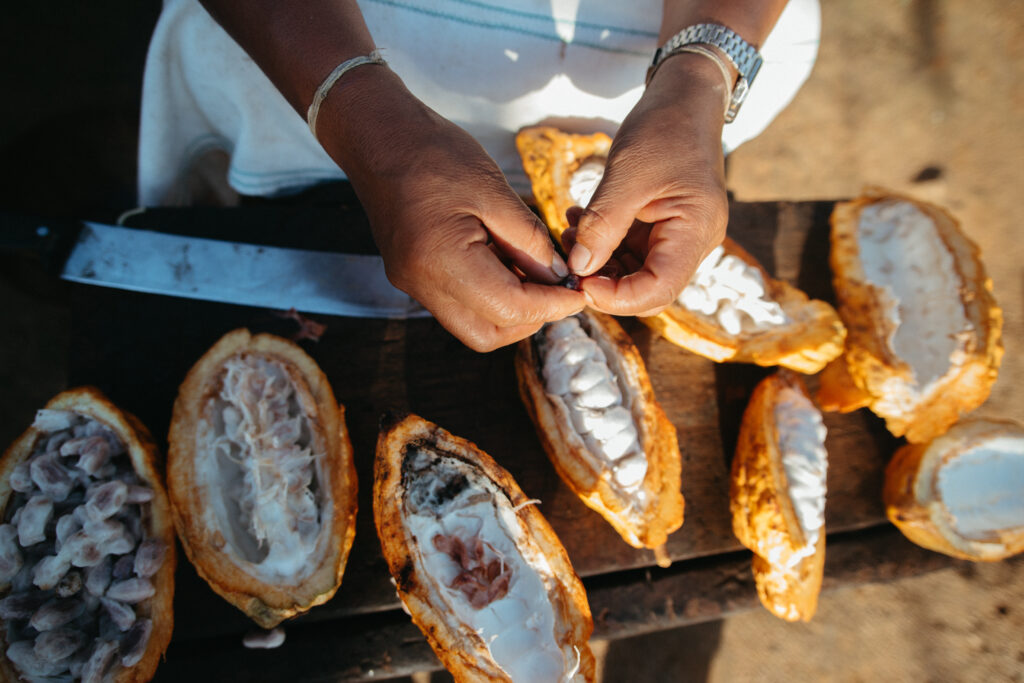
This project will also involve establishing a seed bank and tree nursery, and is being led by the territory through spiritual payments and holistic processes conducted by the Mamos. The Mamos determine the most suitable locations on the land for the different elements being planned, and Professor Felipe from Madre Tierra Permacultura — a collaborator on the project — will assist with the design of the farm’s layout based on the Mamos’ guidance.
Jaguar Siembra is yet another inspiring example of how agroforestry can heal degraded lands and empower communities, as the Arhuaco, Kogi, Wiwa and Kankuamo peoples revitalise sustainable farming practices by blending their ancestral knowledge with complementary technologies. If you feel to support this project, and all of Jaguar Siembra’s work, their website provides information on the different ways people can get involved.
Ivan Sawyer García is a media producer, communicator, collaborative project designer, environmental activist and the founder of Voices of Amerikua.

